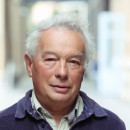What is the focus of your research?
My research in mathematics and statistics mainly focuses on the theory of inverse problems, i.e. estimating the causes of a phenomenon from its consequences. This type of work is extremely useful for satellite or medical imaging and helps deal with many statistical issues. The main original feature of my research was the use of this theory in econometrics to allow a better understanding of endogeneity, processing, auction or contract models and the introduction of big data.
Another theme of my work is studying extreme values of probability distribution applied to the problem of the efficiency frontier. This is the optimal solution for a company or decision-making body. For example, we could imagine a graph for a factory which would represent the maximum possible production for each level of stock of materials. It’s a very useful tool.
More recently, I have looked at the theory of networks and more generally the introduction of geometric concepts for functional estimation. This covers the study of social networks, for example, and their geometry when they are very extensive. These are problems which we encounter when handling huge amounts of data on networks between individuals, helping us to understand behavior which is unique to the individual and behavior which is the product of the society in which they develop. We are starting to work on these topics with my TSE colleagues, notably Stéphane Villeneuve, Thomas Mariotti and Jérôme Bolte.
What interested you in these problems?
Above all, it was my interest in these mathematical objects which got me interested in network issues. These are complex structures and at the forefront of current research in statistics, like questions relating to big data or machine learning.
On the other hand, the pleasure of understanding and precisely defining phenomena, and the resulting intellectual satisfaction, are reasons for my love of mathematics. Mathematics allow unmatched reasoning where the most complex problems can be expressed and solved with a few characters.
Other than this love of mathematics, what are some of the highlights of your career?
Being able to supervise over 50 doctoral students, most of whom are now professors at the best universities across the globe. I work regularly with about 10 of them on various topics. It’s a real pleasure to share and guide new generations of researchers and I think that it is something we do very well here.
We’ve also built some strong research partnerships. I am convinced that exchanging with companies, as I have done with La Poste, Royal Mail, CNES, Telefonica, EDF and others, has given rise to new research areas. This advantage has driven Toulouse’s reputation in economics research, and it has allowed us to deliver unprecedented research results. The contact with the real world leads to questions about undetected issues and Jean Tirole’s Nobel prize reflected work on research partnerships.
What was TSE like in 1986?
Everything started in 1985 when Jean-Jacques Laffont received approval for two professor positions in Toulouse. He immediately offered these to me and Jean-Charles Rochet, and we joined Toulouse in 1986 and 1987 respectively. Jean-Jacques’ entrepreneurial outlook and vision allowed the institution to transform into an international research center. On the one hand because he had this dream and outlook, and also because he knew to surround himself with excellent professors and to rely on French institutions to work together in an innovative manner.
I kind of miss the feeling of that era and the opportunities we had; everything seemed possible and our small team gave us flexibility which we have lost by getting bigger. However, our current size has given us a lot of flexibility in many other fields, such as recruitment and hosting prestigious visitors, and we have developed extraordinary scientific activities which are unrivalled worldwide.
Extract of the TSE Mag#17 Summer 2018




